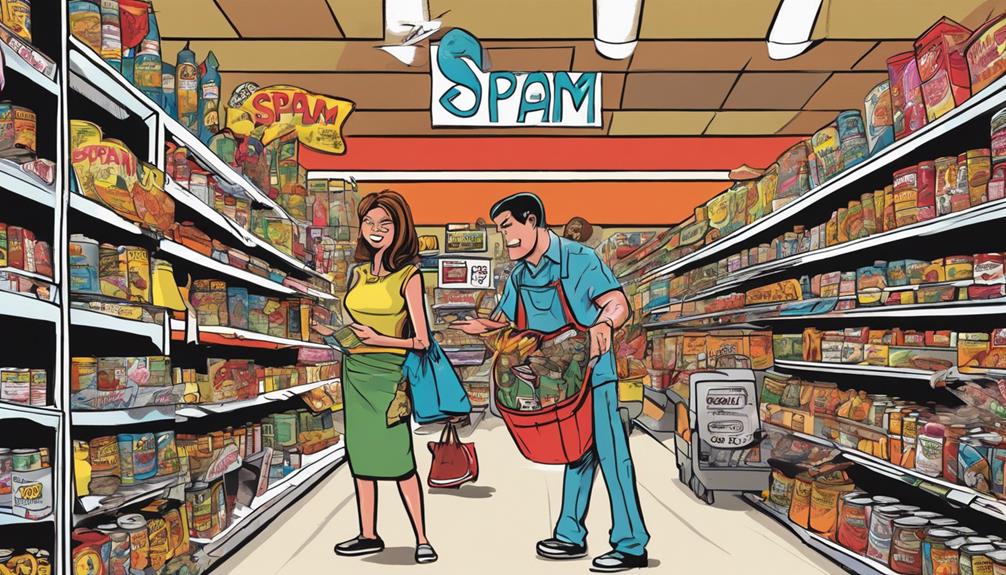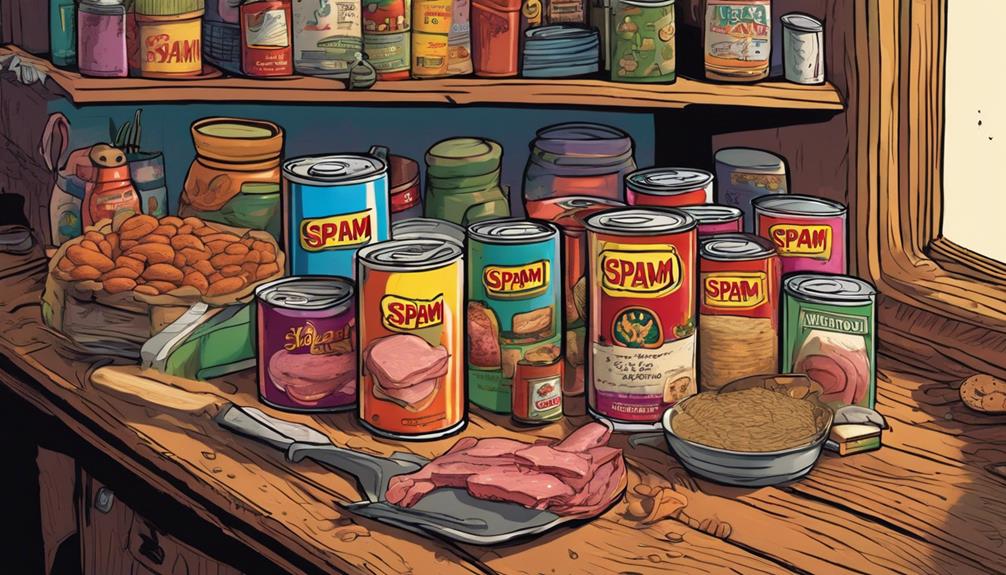Spam's enduring appeal lies in its affordability, convenience, and rich cultural significance. You know it fits a budget, making meal planning easier for busy families. With a long shelf life, it stays fresh and ready in your pantry. Culturally, it's embraced in dishes from Hawaiian cuisine to South Korean favorites, tying generations together with nostalgic flavors. Hormel's smart marketing keeps Spam relevant, showcasing its versatility while acknowledging health concerns. Those memories and recipes transform Spam into more than just food; it's a lifestyle choice. Interested in how these aspects influence modern dining habits? There's much more to explore!
Key Takeaways
- Spam remains budget-friendly, offering cost-effective meal options for families and appealing to budget-conscious shoppers.
- Its long shelf life of several years prevents spoilage, making it a convenient pantry staple.
- Spam is versatile, suitable for various meals, and simplifies meal planning for busy lifestyles.
- It holds cultural significance, being integral to Hawaiian cuisine and popular in South Korean dishes.
Sales Trends and Success

Spam has consistently outperformed expectations in sales, with Hormel Foods reporting record-high sales for seven straight years as of 2021.
You'll find that its success continues, prompting Hormel to expand production capacity in 2023 to meet rising demand.
Despite the growing emphasis on health-focused food choices, Spam remains a favorite among consumers.
Price increases have been noted, yet it still appeals to budget-conscious shoppers.
The company's multi-year supply agreements guarantee that you'll always find Spam on the shelves.
Its popularity isn't just a passing trend; it thrives in various culinary settings, proving that this iconic product can adapt while maintaining its loyal fan base.
Spam's enduring appeal keeps it relevant in today's ever-changing food landscape.
Affordability and Shelf Life

With its record sales and loyal customer base, the affordability and long shelf life of this product make it an appealing choice for families looking to stretch their budgets.
You can stock up without worrying about spoilage, making meal planning a breeze.
Here's what makes Spam a go-to pantry staple:
- Budget-friendly: You won't break the bank when you choose Spam for your meals.
- Long-lasting: With a shelf life of several years, it's there when you need it most.
Choosing Spam not only saves you money but also time, allowing you to focus on what really matters—your family.
Cultural Impact and Significance

Known for its unique place in culinary traditions, Spam has become a beloved staple in regions like Hawaii and South Korea, where it holds significant cultural importance. In Hawaii, Spam was introduced in 1937 and has since become a key ingredient in local dishes. In South Korea, it's essential in meals like budae jjigae, linking its presence to wartime history. This connection enhances its nostalgic value, making it more than just a food item for many consumers.
| Cultural Significance | Description |
|---|---|
| Hawaii | Integral to local cuisine |
| South Korea | Key ingredient in budae jjigae |
| Wartime History | Symbol of food scarcity |
| Nostalgic Value | Evokes memories and tradition |
| Culinary Versatility | Used in various dishes |
Marketing and Branding Tactics

Building on its cultural significance, Hormel Foods employs effective marketing and branding strategies that resonate with consumers across generations. By leveraging nostalgia and familiarity, the brand connects with your emotions, making Spam feel like a comforting choice.
Here are a few tactics that evoke strong feelings:
- Nostalgic Packaging: The iconic can design reminds you of family meals and traditions.
- Versatile Recipes: Marketing highlights Spam's adaptability in various cuisines, making it feel like a kitchen staple.
These strategies not only build trust but also keep Spam relevant, appealing to both the young and the young-at-heart.
As a result, you see Spam as more than food; it becomes part of your lifestyle.
Health Implications and Consumer Choices

Spam's processed nature raises health concerns, yet many consumers still gravitate toward its convenience and taste.
You might worry about the risks of chronic diseases like diabetes and heart disease linked to processed foods. Despite this, the allure of an affordable, ready-to-eat meal often outweighs these worries.
With busy lifestyles, you appreciate Spam's long shelf life and versatility in various dishes. While modern health trends favor fresh and organic options, Spam continues to thrive as a pantry staple.
Hormel Foods cleverly navigates health scrutiny, ensuring that consumers feel reassured about their choices.
Ultimately, the balance between convenience and health implications remains a personal decision, and for many, Spam's appeal remains strong. In recent years, the rise of convenience food options and busy lifestyles has led to an increased consumption of processed and pre-packaged foods. Despite concerns about the health implications of these choices, many individuals continue to prioritize convenience and taste when making food decisions. Furthermore, with the introduction of Airbnb’s new logo, it’s clear that companies are always looking for new ways to appeal to consumer preferences and create a strong brand image. Ultimately, the future of convenience foods and their impact on health remains to be seen as personal preferences and industry innovations continue to shape the market.
Conclusion
In a world where food trends come and go, Spam stands resilient, quietly tucked away in pantries.
You might wonder, what fuels its lasting appeal? Is it the unbeatable price, the endless recipes, or the nostalgia it brings?
As you immerse yourself in your next meal, consider the stories wrapped in that can. What memories does it evoke? What flavors will you explore next?
Spam isn't just a meal; it's a journey waiting to unfold, one bite at a time.









